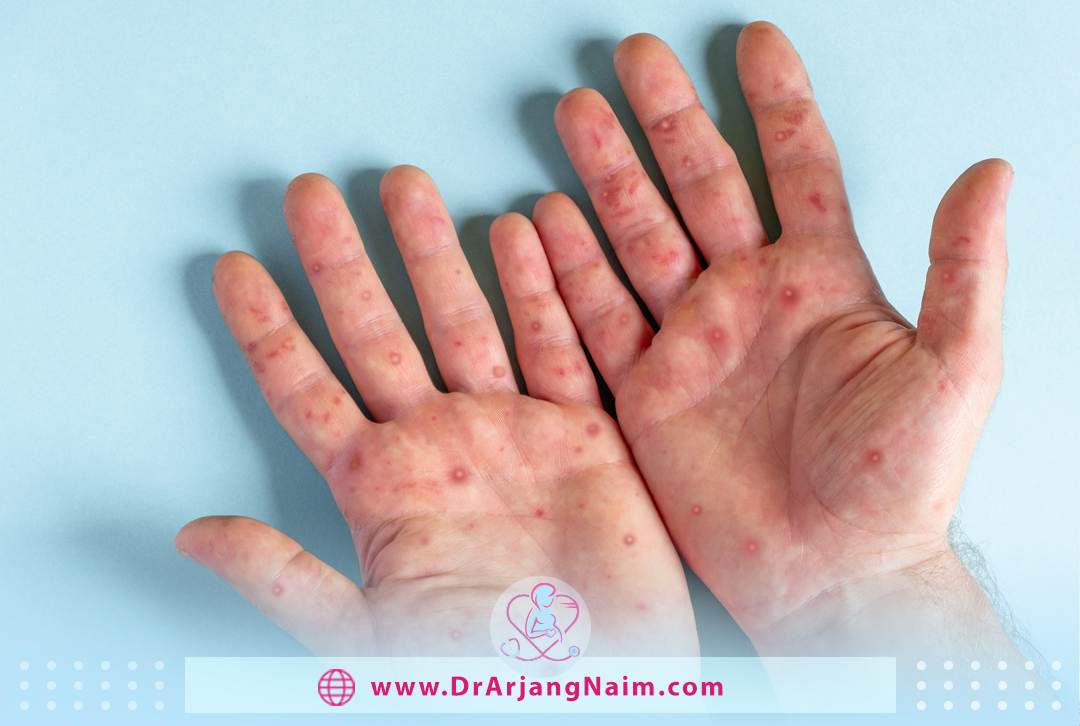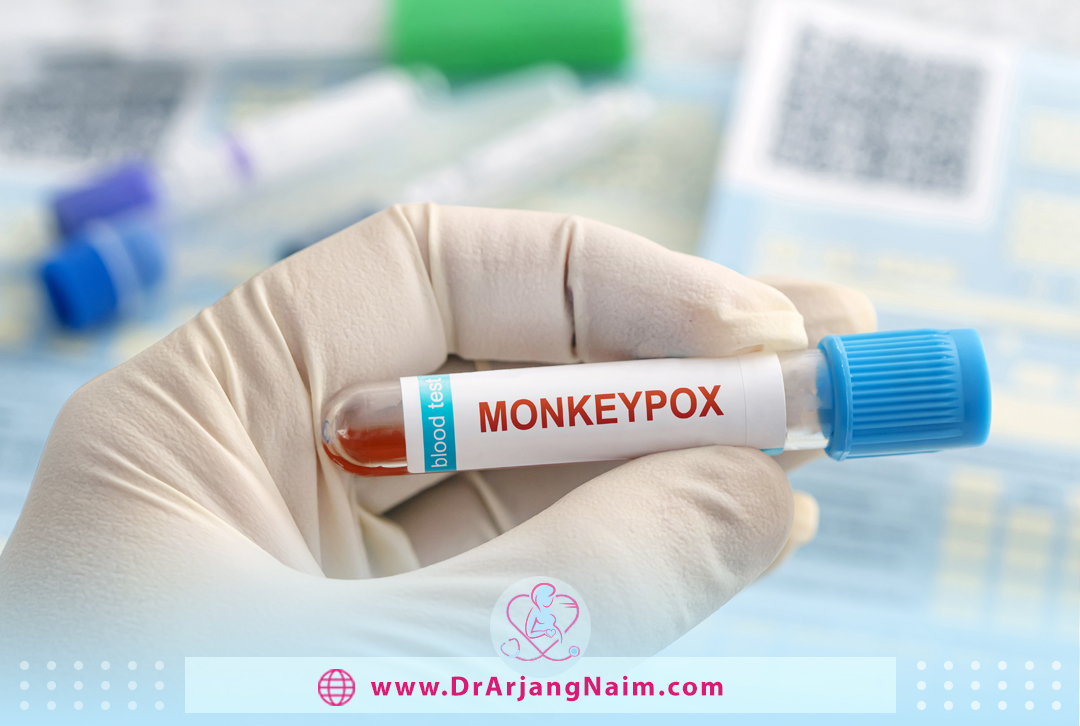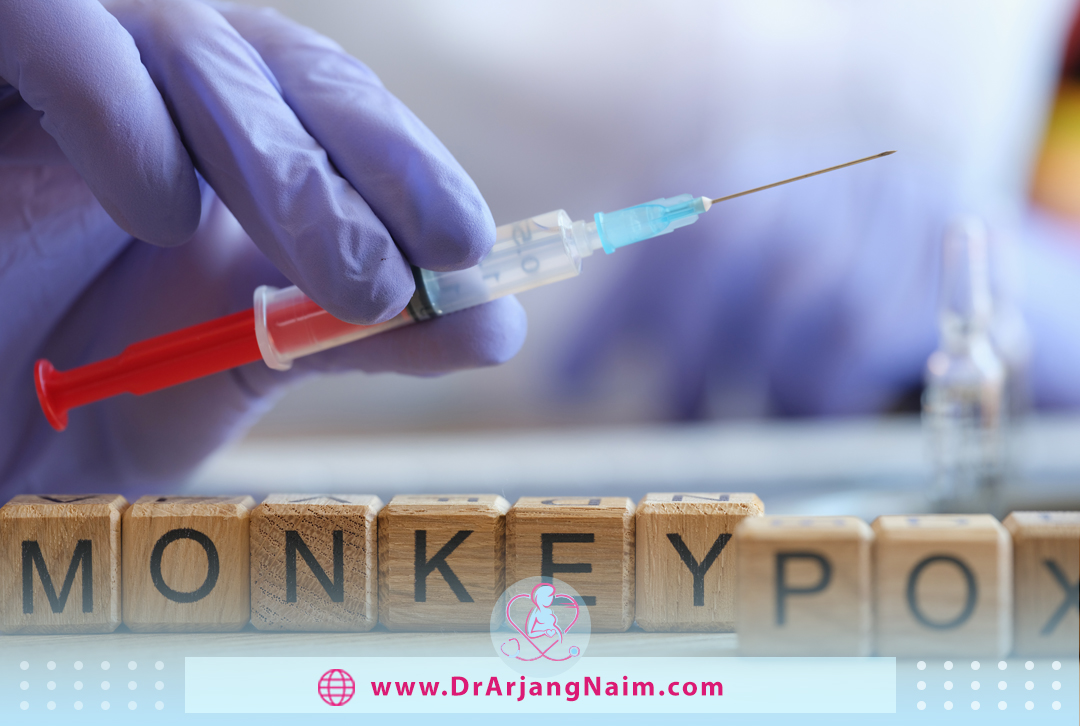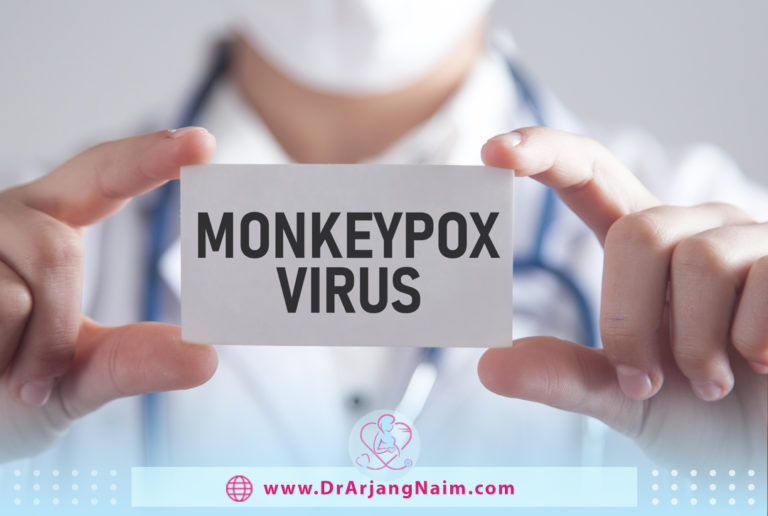Monkeypox is a rare disease caused by infection with the CDC virus. This virus is part of the variola virus family, which causes smallpox. Symptoms of monkeypox are similar to those of smallpox but are milder and rarely fatal.
It was discovered in 1958 when two outbreaks of a pox-like disease occurred in colonies of monkeys kept for research. Despite being named “monkeypox,” the source of the infection remains unknown.
The first human case was recorded in 1970. Before the 2022 outbreak, monkeypox was reported in several Central and West African countries. Previously, almost all cases of monkeypox in people outside of Africa were linked to international travel to countries where the disease commonly occurs or through imported animals. These cases have appeared on several continents.

What are the symptoms?
People with this disease have a rash on or near the genitals (penis, testicles, labia, and vagina) or anus and may be on other areas such as the hands, feet, chest, face, or mouth. Before healing, the rash goes through different stages, including scabbing.
Rashes can look like pimples or blisters at first and may be painful or itchy. Other symptoms include:
- Fever
- Chills
- Swollen lymph nodes
- Exhaustion
- Muscle aches and backache
- Headache
- Respiratory symptoms
A person may experience all or just a few symptoms. Sometimes, people have flu-like symptoms before the rash. Some people experience a rash first, followed by other symptoms.
How can monkeypox spread?
It can spread from person to person through close contact. A person infected with it can spread it through:
- Contact with body fluids like blood or semen
- Contact with monkeypox lesions on their skin
- Respiratory droplets
- Things that have touched infected body fluids, like bedding or clothing
The researchers found that 98 percent of people who contracted monkeypox between late April and late June 2022 were gay or bisexual men. Researchers suspected that the virus spread through sexual activity in 95 percent of infected people.
It can also spread from animals to humans. Infected animals can transmit the virus if they bite or scratch a person. It’s unclear whether dogs and cats can be infected, but the Centers for Disease Control and Prevention (CDC) says we should assume that any mammal can catch monkeypox. The virus can enter the body through a break in the skin, mouth nose, or eyes. It can be inhaled but probably has to be in close contact with the person for a long time. This is because most droplets do not travel very far.
Monkeypox is not considered a sexually transmitted disease (STD), as it can be acquired from other contact forms. But people with monkeypox can transmit it during sex.
How serious is monkeypox?
This disease usually lasts for 2 to 4 weeks. It can be quite serious, especially in children exposed to large amounts of the virus or in people with other illnesses or a weakened immune system.
In some cases, thousands of lesions grow together and cause the loss of large areas of skin. Death is rare but possible. In Africa, monkeypox kills 1 in 10 people who get it. But many people in this region live in areas that do not have adequate medical care. Children are more at risk of developing serious diseases and death. Potential serious effects of monkeypox include secondary infections such as:
- Encephalitis
- Sepsis
- Bronchopneumonia
- Infection of the cornea with possible vision loss
Monkeypox vs. chickenpox
Although both cause skin rashes, different viruses cause monkeypox and chickenpox. Monkeypox is an orthopox virus, while chickenpox is a herpes virus. Both viruses can be transmitted through skin-to-skin or prolonged face-to-face contact, but chickenpox is highly contagious and spreads more easily than monkeypox. There is more possibility of swollen lymph nodes in people with monkeypox than in people with chicken pox.
Rashes also act differently. While the chicken pox rash can appear in waves, the monkeypox sores develop at the same time. Chickenpox symptoms, including the rash, resolve within two weeks, while monkeypox takes two to four weeks to resolve.
Monkeypox vs. smallpox
Smallpox and monkeypox are part of the orthopoxvirus family, so similar but distinct viruses cause them. Thanks to effective vaccines, smallpox was eradicated by 1980. Smallpox was highly contagious and spread more easily than monkeypox. The symptoms of monkeypox are similar to smallpox but milder. Smallpox and monkeypox are part of the orthopoxvirus family, so similar but distinct viruses cause them. Vaccines were able to eradicate smallpox by 1980. Smallpox was highly contagious and spread more easily than monkeypox.
Monkeypox and pregnancy
According to the CDC, if a woman is pregnant or breastfeeding, she may be at risk of serious illness if she gets the infection. There is limited information on the effects of monkeypox during pregnancy, but the WHO states that the mother can transmit the virus to the fetus through the placenta before delivery. This issue can increase the possibility of miscarriage and stillbirth.
There is no information on whether monkeypox can increase the risk of birth defects. But fever is one of the main symptoms. And if a woman gets this infection in the first trimester of pregnancy, a high fever can increase the possibility of some birth defects. The virus can also be transmitted to the baby during or after birth through close contact. However, there is no evidence that the virus can be transmitted through breastfeeding. Gynecologists and obstetricians recommend cesarean section to reduce the risk of transmission of infection to the baby during birth. After birth, the baby may be separated from the mother for protection until there is no risk of infection.
How do you prevent the monkeypox virus?
The smallpox vaccine protects against monkeypox, but its use is currently limited to clinical trials. Prevention depends on reducing human contact with infected animals and limiting person-to-person transmission. The best way to prevent the spread of the virus includes:
- Avoid contact with infected animals
- Avoid contact with bedding and other materials infected with the virus
- Thoroughly cook all foods that contain animal meat or its parts
- Wash your hands regularly with soap and water
- Avoid contact with people who may be infected with the virus
- Practice safe sex
- Use a mask that covers your mouth and nose around others
- Clean and disinfect frequently touched surfaces
- Use personal protective equipment (PPE) when caring for people infected with the virus.

Diagnosis
If smallpox is suspected, the doctor will look at the lesions and ask the patient for details about the symptoms, such as when they may have been exposed to the virus. They will try to deny similar conditions:
- Measles
- Chickenpox
- Syphilis
- Allergies
- Scabies
- Bacterial skin infections
Treatment
It is usually a self-limiting disease with symptoms lasting from two to four weeks. Most people with this disease get better on their own without treatment. After diagnosis, the health care provider evaluates the patient and tries to relieve symptoms, prevent dehydration, and prescribe antibiotics if secondary bacterial infections occur. Doctors can turn to antiviral drugs, vaccinia gamma globulin, and the smallpox vaccine to control outbreaks.

Vaccination
If you have had the smallpox vaccine recently (within the last 3-5 years), you will be protected against monkeypox. Studies show that the smallpox vaccine is 85% effective in preventing monkeypox. Currently, there are two vaccines to prevent smallpox: ACAM2000 and JYNNEOS. In 2019, the FDA also approved JYNNEOS for prevention.
These two vaccines contain live viruses. ACAM2000 enters the body by piercing the skin and through injection. A small lesion may develop on the skin, and the virus grows on it (this causes the characteristic scar of the smallpox vaccine). Before the wound heals, the virus can spread to other parts of the body or other people. If you receive this vaccine, be careful not to spread the virus while the lesion heals. JYNNEOS is another vaccine injected twice at an interval of 4 weeks. In injecting this vaccine, there is no risk of spreading the virus.
In general, it is better to be vaccinated before being exposed to monkeypox, but injecting the vaccine after exposure to the virus may also help prevent or reduce the disease. The CDC recommends getting the vaccine no later than four days after exposure to the monkeypox virus.
But even up to 14 days after exposure to the virus, vaccination can still reduce the symptoms of monkeypox. If you have been exposed to monkeypox and have not received a smallpox vaccine in the past three years, experts recommend revaccinating as soon as possible. Smallpox vaccination may cause mild symptoms such as fever, swollen glands, fatigue, redness, and itching at the vaccination site.
The bottom line
We had not yet completely gotten rid of the coronavirus when the name of another contagious disease spread worldwide. This rare disease is smallpox and is caused by the monkeypox virus.This virus is mostly found in Africa but has recently been seen in other parts of the world. Monkeypox causes flu-like symptoms, and a rash develops on the skin within a few days. There is no proven cure for monkeypox, but don’t worry because, like chickenpox, it usually goes away on its own after a few days.
Additional questions
How long does monkey pox take to heal?
This disease usually lasts 2-4 weeks. If you have a new or unexplained rash or other symptoms, avoid close contact, including sex or intimate contact with others, until a healthcare provider has examined you.
2. Is monkeypox itchy?
A monkeypox rash can be itchy and, in some cases, may be painful.
3. Do monkey pox look like pimples?
Before healing, the rash goes through different stages, including scabbing. The rash can initially look like a pimple or blister and may be painful or itchy.
4.Who gets the chickenpox vaccine?
The CDC recommends two doses of chickenpox vaccine for children, adolescents, and adults who have never had chickenpox and have never been vaccinated. Children are recommended to receive the first dose at 12 to 15 months and the second at 4 to 6 years of age.
- What are the eight most communicable diseases?
- MRSA
- Pertussis
- Rabies
- Sexually Transmitted Disease
- Shigellosis
- Tuberculosis
- West Nile Virus
- Zika
References:
https://www.webmd.com/a-to-z-guides/monkeypox-what-know
https://my.clevelandclinic.org/health/diseases/22371-monkeypox#diagnosis-and-tests
https://dermnetnz.org/topics/monkeypox




